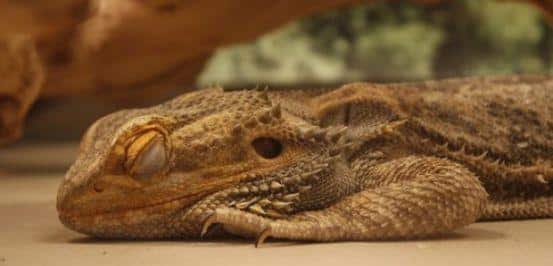Your bearded dragon’s legs help in walking, climbing, or running. Of course, they have four legs, two front, and two hind limbs. Some common issues that may affect include the following:

Missing legs
Bites by mates, other pets, or accidents may be the reasons why a beardie may not have legs. Your vet will help in the treatment, and such a beardie will need lifelong assisted living.
Swollen and broken legs
Swollen or broken legs may be due to accidents such as falls, bites, dislocation, or anything that will make their leg bones, including femur to snap. Also, metabolic disease predisposes various bones like the leg, spinal, jaw, etc., to breakage.
Signs of a broken or swollen limp include limping, jerky movements, swelling, not moving, or favoring the fractured leg. Sometimes, the broken bones may protrude, or there might be physical injuries, bleeding, and so forth.
Since proper diagnosis that may involve the use X-ray is necessary, all you need to do is clean the wound with contact lens saline solution or povidone-iodine (Betadine) and generously applying a cotton batting and loosely cover it with a Vetrap Tape to immobilize the fracture.
Afterward, let your vet handle the breakage. Don’t try to treat these pets at home as you may not know the extent of the fracture.
In case of a broken limp, talk to your vet for treatment, which may include support using tape to immobilize it, external skeletal fixation use, surgical repair that may require pins and plates, or in severe cases where repair is not possible, your vet may contemplate amputation.
Healing time will depend on the severity, age, diet, UV light, and temperature. Ensure optimum UV lighting, temperature as well as good nutrition. Don’t forget to gut load their feeder insects and dust their food with vitamin D3, calcium, and other multivitamins.
